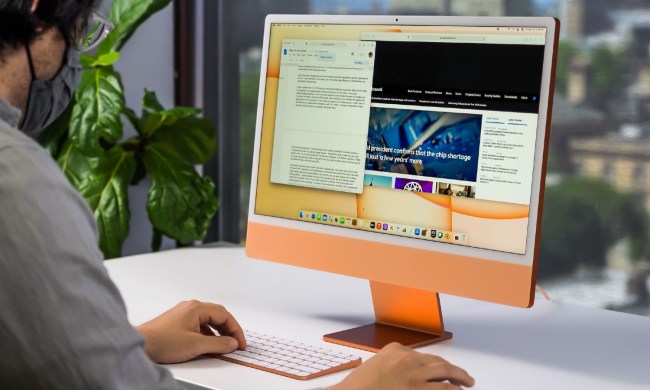Got an old iMac around and can’t wait for Apple to refresh its all-in-one desktop with the latest M1 processor? That’s the exact predicament one YouTuber found himself in, and he cleverly upcycled his old 2011 iMac with a 27-inch display by putting in an M1 processor and logic board from Apple’s recently refreshed Mac Mini.
The solution is far from plug-and-play — you’ll need to know your way around of the inside of a computer, which is a nonstarter for many consumers who are already too afraid of dismantling their desktops to begin with. In fact, not only would you have to dismantle your aging iMac, but you’ll also have to do the same to get the logic board with its M1 processor out of a brand-new Mac Mini.
To accomplish this hack, YouTuber and DIYer Luke Miani also needed a $79 converter board, which essentially converts the screen of the iMac into an HDMI display. Essentially, it’s like plugging a Mac Mini into an external monitor. Miani removed all the parts that weren’t welded to the inside of his iMac and then mounted the Mac Mini’s guts and converter board to any available and free space inside the old all-in-one.
However, things became trickier when it comes to wireless signals, and Miani found that the Bluetooth connection to the wireless mouse and keyboard were really spotty and the MacGyvered rig’s Wi-Fi speed was super slow.
“The reason for this is that the Mac mini, like most Macs, had three antenna connections, and one of those antennas is on the little metal bottom plate that we took off when we tore apart the Mac mini,” he said in his video, according to 9to5 Mac. “So, it only had two out of three antennas, and it was certainly suffering by the time it got put inside the metal enclosure of the iMac.”

To overcome spotty wireless connectivity from Bluetooth and Wi-Fi signals, he had to repurpose one of the metal bands inside the iMac’s chassis.
And while this hack will give you access to a more modern brain for your iMac, you’ll still encounter other issues — mainly, the lack of ports. Mounting the internals of the M1 Mac Mini to the inside of the chassis of your iMac means that you’ll be sacrificing USB-C and Thunderbolt ports. This may not be a big deal for some users given the popularity of cloud storage solutions and wireless peripherals. However, if something goes wrong in the future and you need to boot from a USB drive, you’ll likely need to dismantle your setup.
Still, Miani’s setup is a great example of how you can upcycle an older computer that may be sitting around your house. Given that Miani already had an old iMac, the most costly components of this project were the Mac Mini, which starts at $699, and the $79 display converter board. In addition to the highly anticipated iMac refresh with an Apple Silicon processor, the Cupertino, California, company is also believed to be working on a new Mac Pro featuring its custom processor and redesigned versions of its MacBook Pros.


